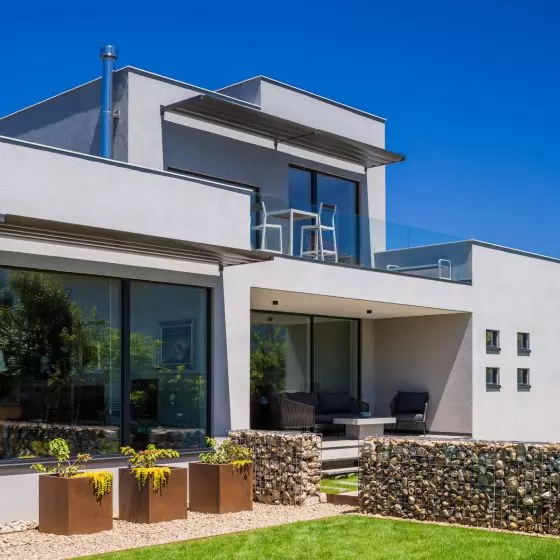Large-format glazing plays an extremely important role in architectural projects. Thanks to constant technological development and numerous innovations implemented at the stage of glass production, more and more possibilities for their use - not only as a source of daylight - are emerging. An example is heating glass, which allows to redefine the outlook on the functionality and comfort of spaces.
Window a source of... heat
The use of heating glass creates a number of new possibilities regarding the arrangement of space. Its operation is based on the flow of electricity through a sheet covered with a low-emission coating of metal oxides, thanks to which electrical energy is converted into heat. Thus, heating glass can be the main or additional source of heat and thus significantly reduce or completely eliminate the need to use traditional radiators, which often disrupt the aesthetics and visual coherence of interiors and take up valuable space. It allows heating of hard-to-reach areas and eliminates the so-called "cold glass effect", which is particularly important in the case of windows with a large surface area.
However, there are definitely more applications of "warm glass". Thanks to the anti-condensation function, it prevents the accumulation of water vapor on the panes, leading to the development of mold and mildew, which translates into better indoor air quality and contributes to the transparency of the panes - regardless of the weather conditions outside. The snow melting function, in turn, is perfect in the context of roof windows, as a result of which the problem of snow lingering on the roof (the removal of which can be costly and sometimes - dangerous) is finally solved. At the same time, we gain bright, full of daylight interiors without having to resort to artificial lighting on winter days. Aesthetically, pragmatically and to the benefit of our well-being.
© Saint-Gobain
Unlimited possibilities
In addition to a whole range of functionality, heating glass is characterized by an extremely high level of versatility.
Due toits wide variety of applications - from standard windows, to roof windows, to all-glass walls, roofs or even floors, EGLAS heating glass will find its application in the most complex project, explains Aksana Myslivets, Marketing Manager of Saint-Gobain Building Glass. - Its big advantage is also the ease of installation. - Architects deciding to use EGLAS glass in their projects can count on the support of Saint-Gobain experts both at the planning stage and in the subsequent implementation of the investment, she adds. - With the help of a dedicated online calculator, designers can easily calculate the area of heating glass that will guarantee thermal comfort in a given room in accordance with current standards. In addition, the glass is delivered to the customer with installation instructions and electrical diagrams that facilitate the installation process.
Heating glass - the answer to the needs of the 21st century
Importantly, EGLAS fits perfectly into the idea of sustainable construction - an important feature of the heating glass is the possibility of its integration with the photovoltaic installation operating in the building. Thus, heating the space and providing thermal comfort to its users does not come at the expense of the environment, and at the same time allows for far-reaching self-sufficiency and, consequently, saving of financial resources. And speaking of savings, EGLAS glass is also characterized by lower power consumption in contrast to standard solutions. Ecologically and economically at the same time - to the delight of investors.
Large-format glazing in the form of XXL windows, glass roof slopes or floors, is currently one of the hottest architectural trends - both in public buildings and private homes. In addition to the high aesthetics of the design, however, glass panes must be characterized by extensive functionality. EGLAS heated glass is a perfect example of combining elegance with the highest level of comfort - regardless of the design and where it is used.
For more information, visit the company's Saint-Gobain Glass page on the A&B portal.


















